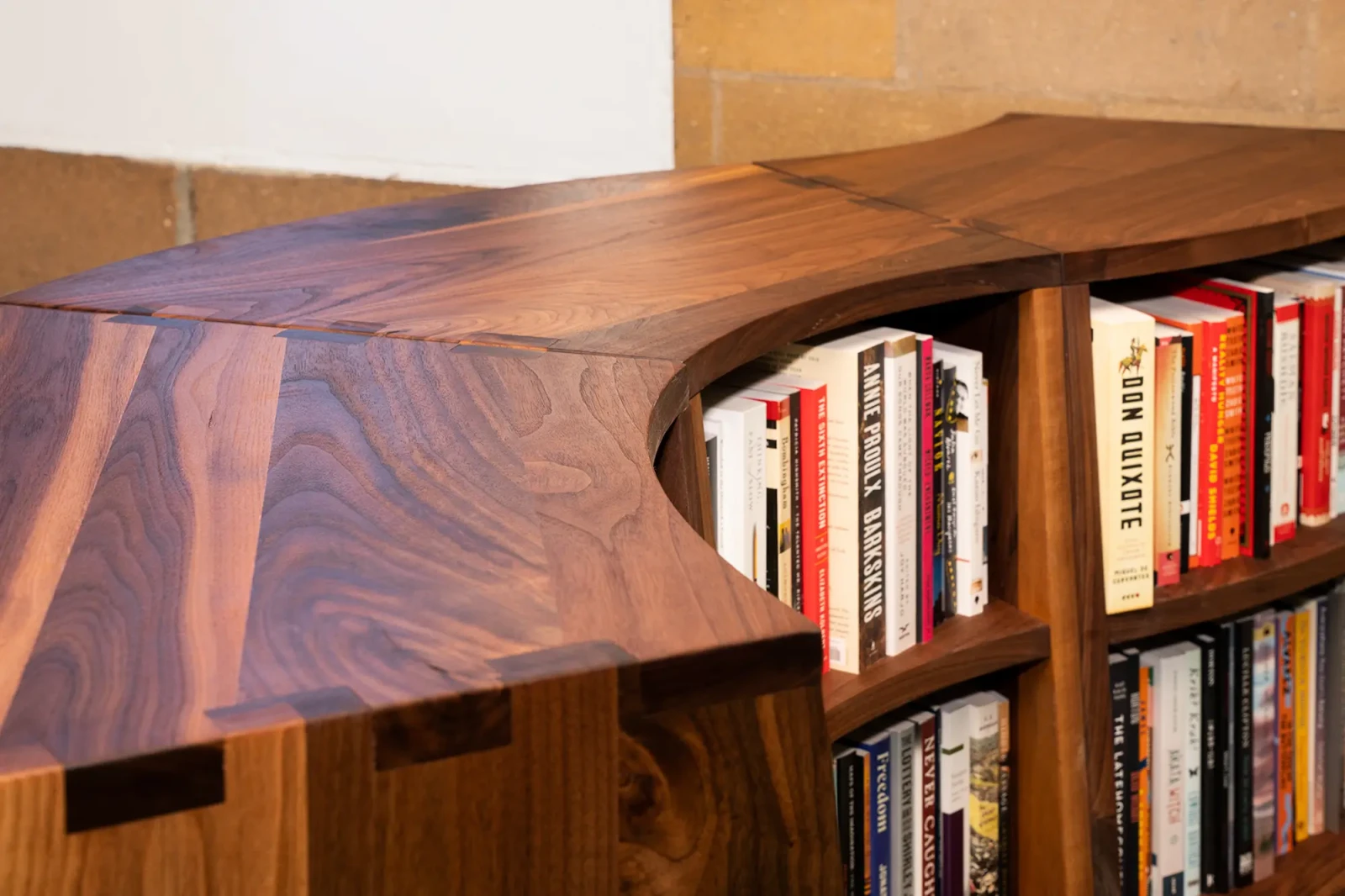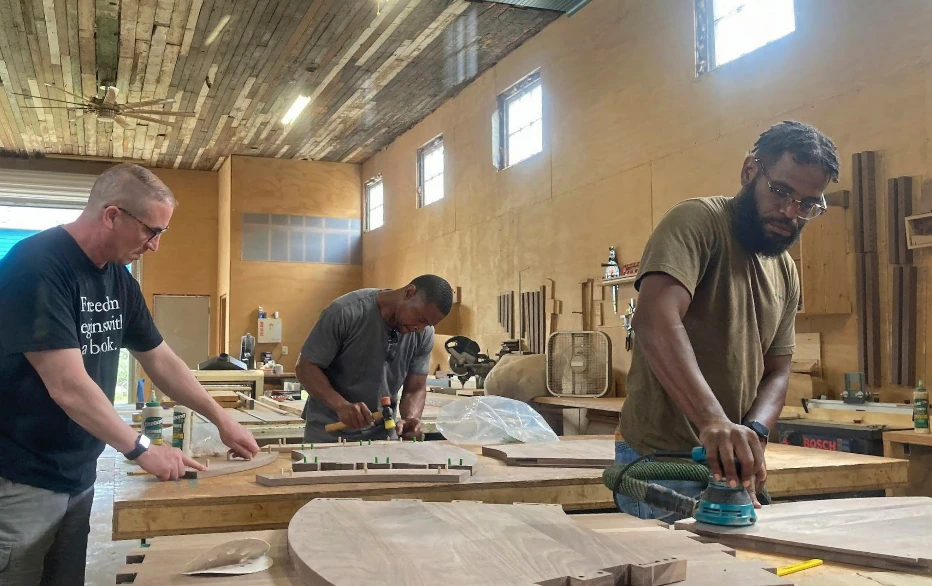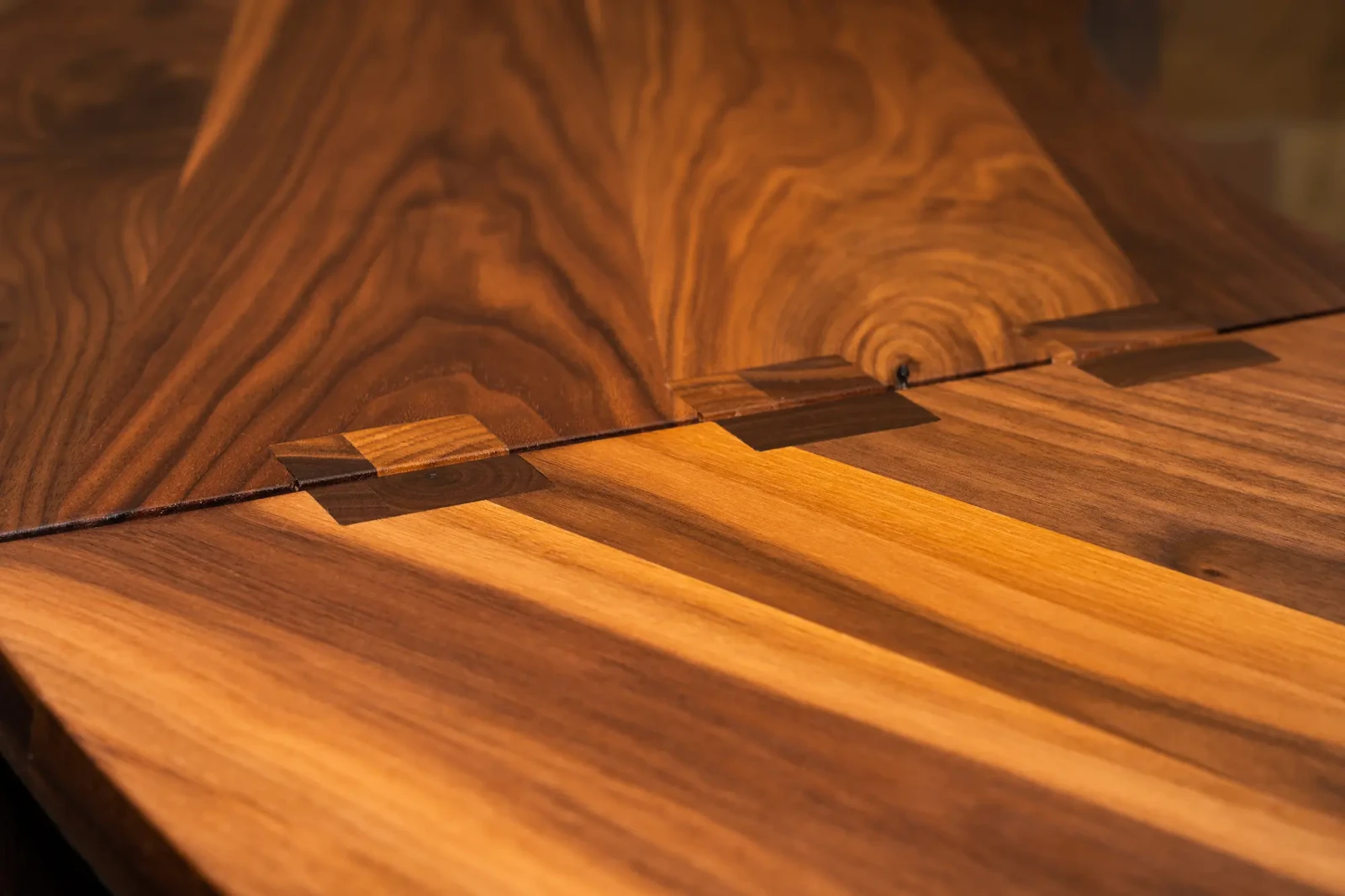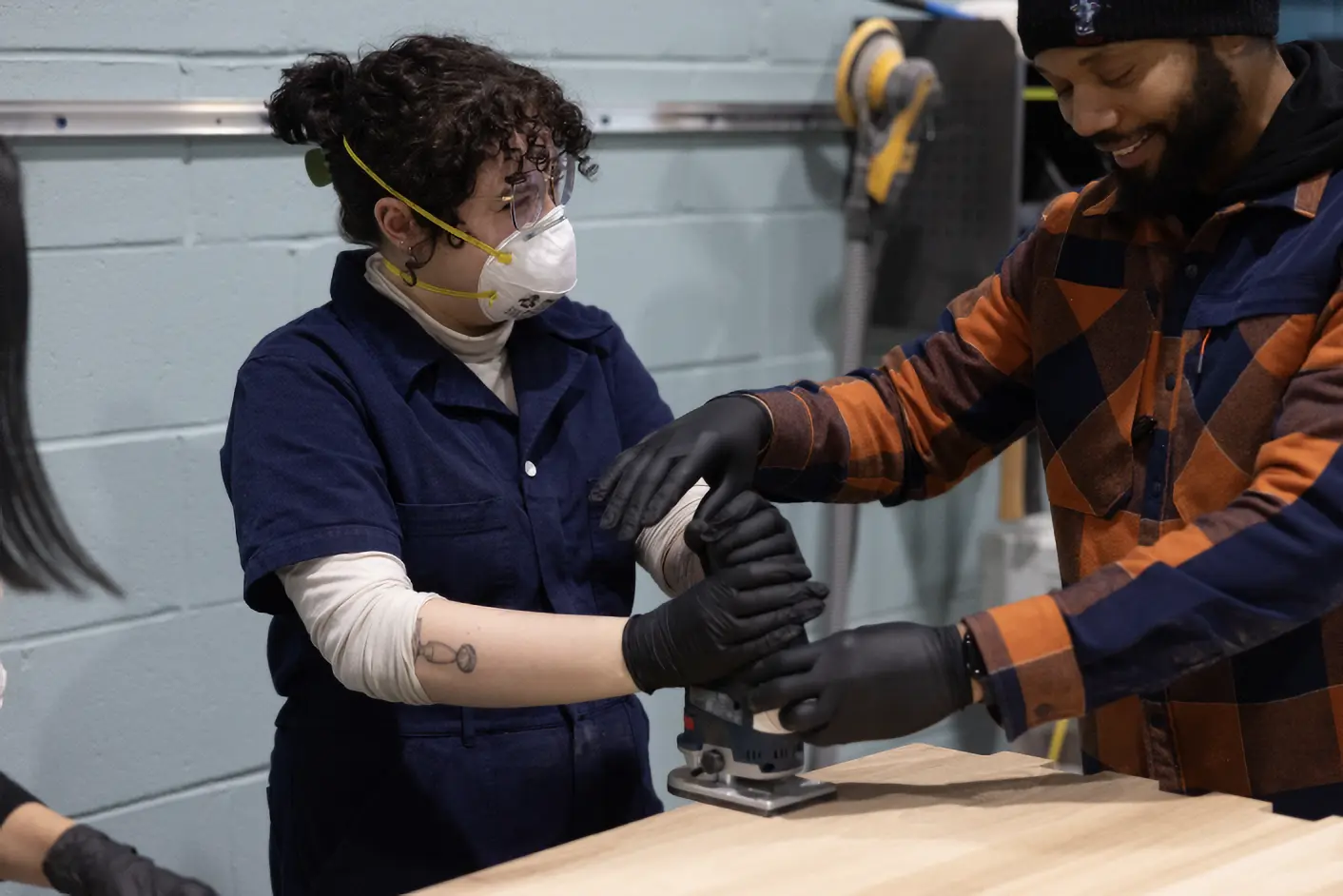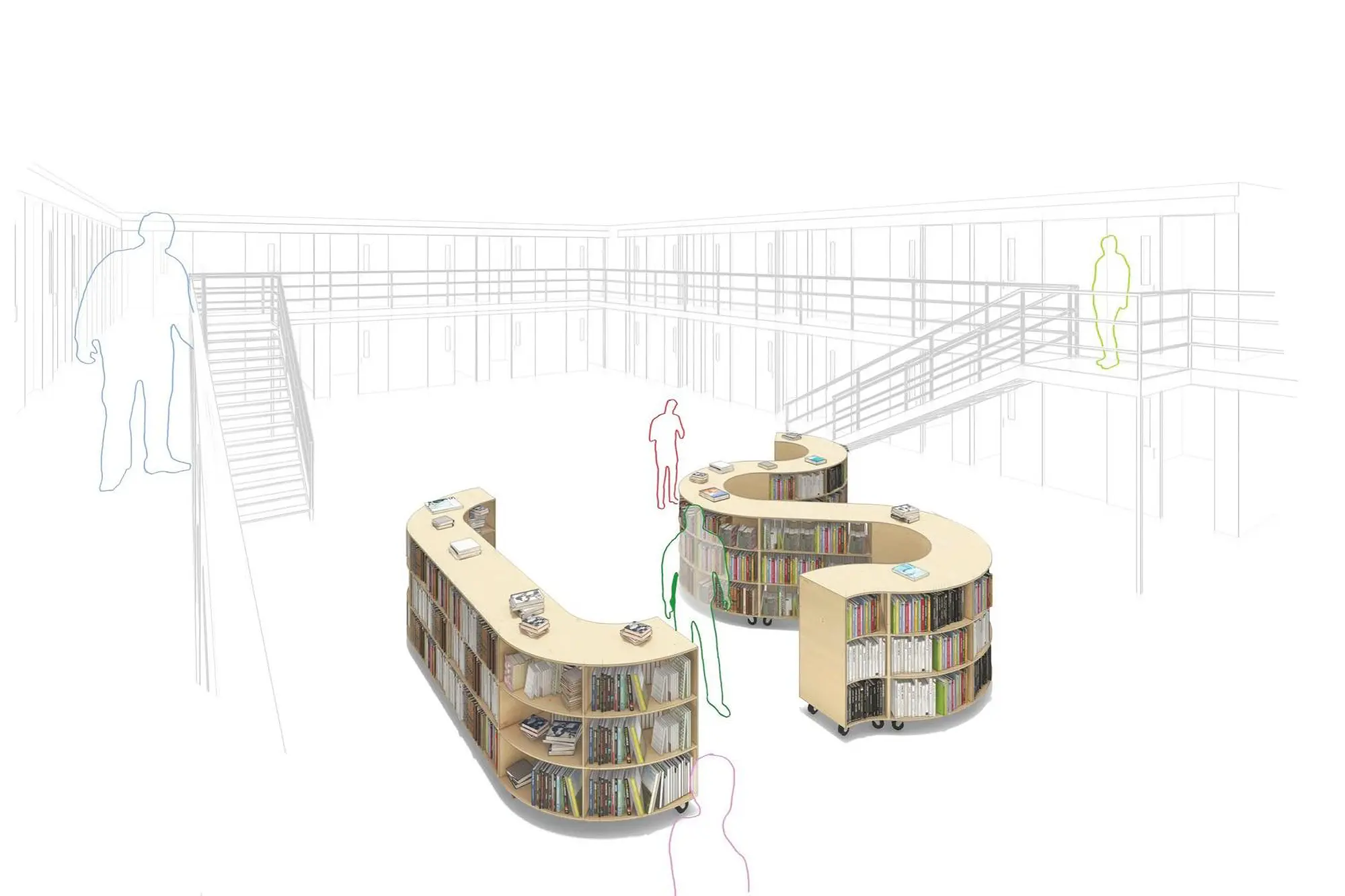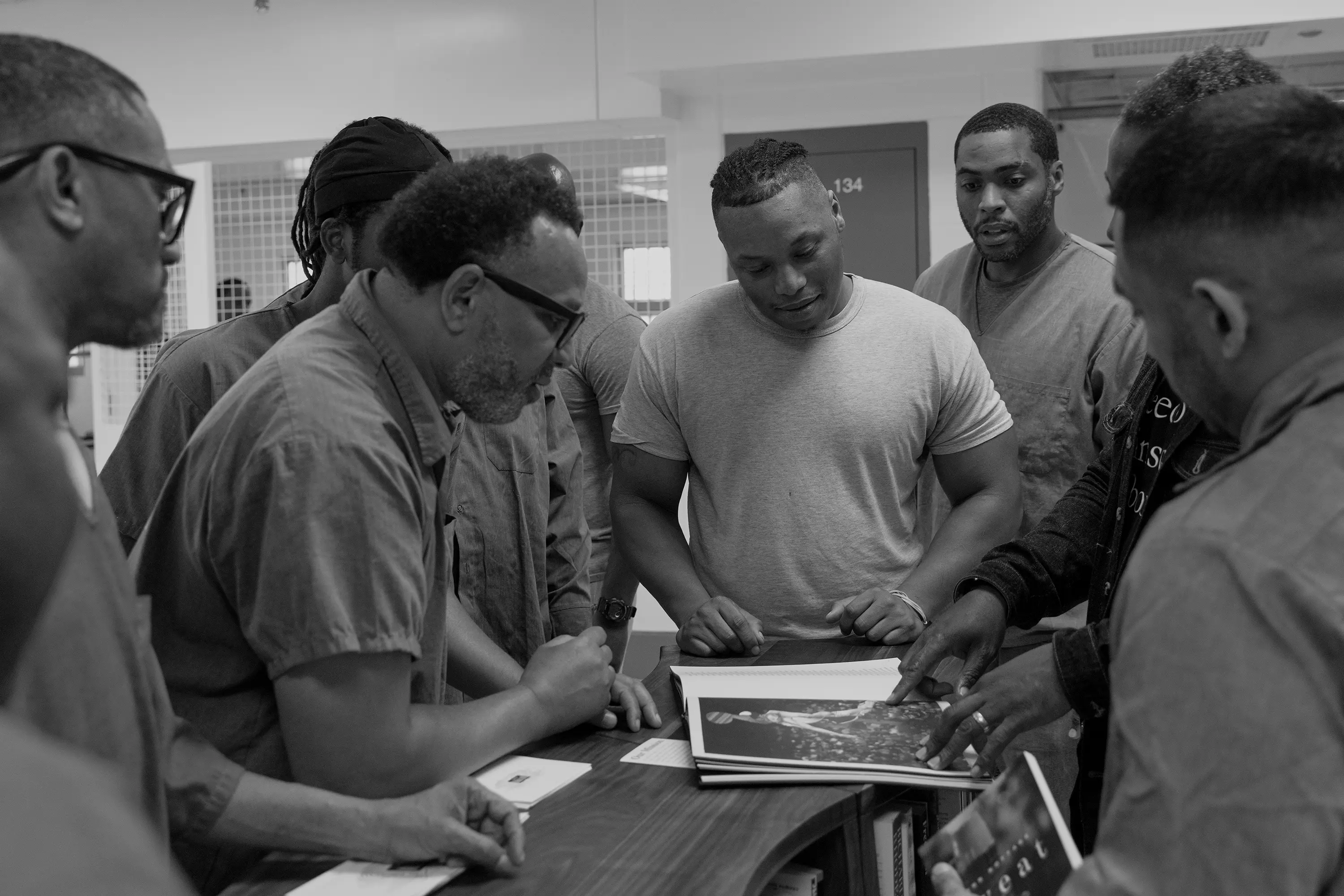Prisons are brutal places, both because of the violence that those incarcerated sometimes visit upon each other and because of the austere environments. Prisons are concrete and straight lines and right angles. Natural light is scarce; air is often stagnant. Men and women have spent decades without touching or seeing a tree. Freedom Reads understands that a library transforms space into possibility.
Every element of the Freedom Library’s design serves as a physical intervention into the chaos of prison, adding a beautiful and regenerative addition to the built environment. To bring nature Inside, the bookcases are carved out of solid wood: maple, cherry, oak, or walnut. Instead of bookcases that lean against a wall, the Freedom Library curves and is positioned in the middle of an open space because, as Alberto Manguel argues in The Library at Night, “a circular library more generously allows the reader to imagine that every last page is also the first.”
The first Freedom Library was made of reclaimed wood. Reclaimed wood comes from trees that have fallen on homes, toppled telephone cords, or been destroyed by lightning. Pieces of maple or oak or cherry that seemed worthy only of the trash heap, we transformed into the beauty of our first Freedom Library.
A Freedom Library consists of three 100-pound, handcrafted wooden bookcases and a 35-pound bench. Each library contains a carefully curated selection of 500 books.
The role of architecture in the hardships imposed by prison cannot be downplayed. From the foreboding physical structures to the limited access to natural light and nature, to the sensory deprivation, the architecture of prisons is a catalyst for much of the harm suffered there.
Through a collaboration with MASS Design, Freedom Reads designed, developed, and began manufacturing curving bookcases that call to mind Rev. Dr. Martin Luther King Jr.’s famed quote, “the arc of the moral universe is long, but it bends towards justice.” The Freedom Library's beautiful curving shelves can serve to counterbalance stress, anxiety, and uncertainty.
A beautiful design alone does not create a pathway to build the 20,000 Freedom Libraries necessary to make this dream a reality for everyone incarcerated. To move from the 120 hours it took to hand cut, assemble, and polish every piece of the Freedom Library, we partnered with J. Joiners, a local New Haven architectural, millwork, and machining firm that has transformed beautifully designed architectural sketches into a product that is efficiently cut and ingeniously assembled without the use of metal fasteners like nails and screws.
Freedom Reads' design decisions and commitments to beauty, dignity, and community guide the fabrication of every Freedom Library.
Freedom Reads designed the Freedom Library to be a thing of beauty. Every aspect of the design and production of these libraries centers our vision to create transformative experiences for people in prison and those who have returned home.
Freedom Reads believes that a book might provide wings.

